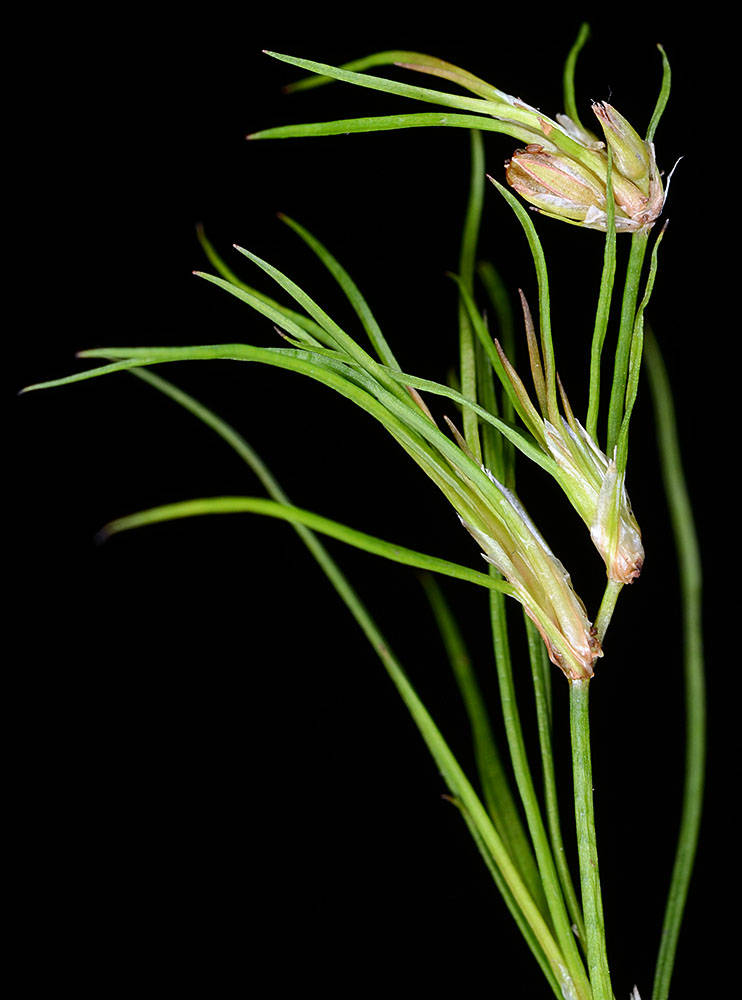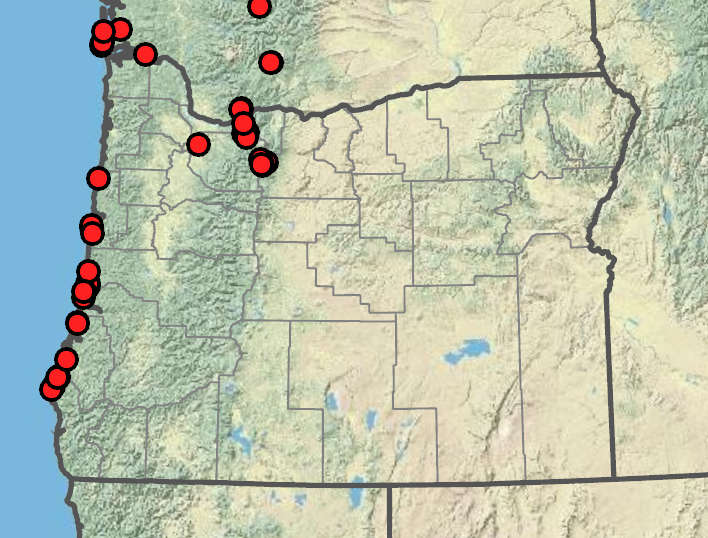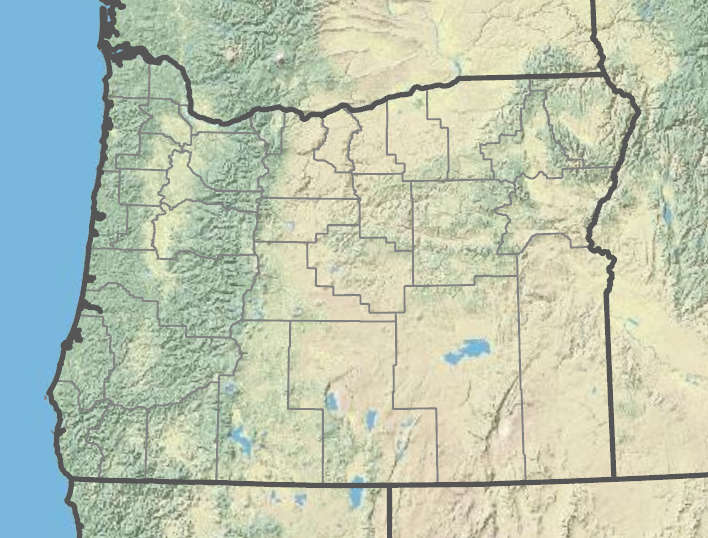Juncus supiniformis
Juncus ranarius
hair-leaved rush, spreading rush
frog rush
numerous; capillary, 0.2– 0.3 mm wide if aquatic; round; hollow, septate;
auricles 0.8–2.1 mm.
usually less than 1 mm wide;
stem leaves usually 1–2.
open, cymes of 2–9 clusters; clusters 2–5(12)-flowered, often bearing leafy bulblets.
cymose;
flowers solitary at nodes.
tepals 6, 3.4–5.4 mm, brown; greenish or reddish;
inner tepal margins usually inrolled;
tips acuminate;
stamens 3 or 6;
filaments 0.8–1.5 mm;
anthers 0.5–0.8 mm;
styles 0.1–0.4 mm.
tepals 6, green to light brown;
outer tepals usually 4–5 mm; inner more or less blunt;
stamens 6;
filaments 0.7– 1.5 mm;
anthers 0.4–0.8 mm;
styles 0.3–0.4 mm.
usually 1–1.5 mm longer than the tepals, brown to dark brown; without metallic gloss, 1-chambered.
usually truncate (blunt to subacute); (shorter than) more or less equaling inner tepals, brown, 1-chambered.
ellipsoid to ovoid, 0.6–1 × 0.2–0.3 mm, apiculate, striate.
0.35–0.5 × 0.25–0.35 mm, apiculate.
=34.
Juncus supiniformis
Juncus ranarius
Shores, peatlands, marshes, wet dune hollows, often in shallow water. 0–1100 m. Est, Casc. CA, WA, north to AK. Native.
Like introduced Juncus bulbosus, this species can bear bulblets in the inflorescence, and both are variable in habit depending on water levels. They differ in the shape of the tepal tips and length of the capsules. Juncus articulatus is similar but has blunter tepal tips and is common on disturbed wet ground.
Moist clay, stream banks, disturbed wet ground. 0–2000m. BR. CA; scattered across North America; North Africa, Eurasia. Exotic.
Juncus ranarius is similar to J. bufonius, as well as Eurasian J. ambiguus, a misapplied name in our flora. The taxonomy of these species is controversial (Balslev 1996), and the complex needs worldwide revision. It is presumably exotic in North America and easily overlooked.
Peter Zika
Peter Zika
- Local floras:
BC,
CA,
OR,
WA
- Local Web sites:
CalFlora,
CalPhotos,
Flora NW,
PNW Herbaria
WildflowerSearch
iNaturalist (observations)
USDA Plants Database
- LBJ Wildflower Center
- SEINet
- Plants of the World Online
- Encyclopedia of Life
- Wikipedia
- Google Image Search


